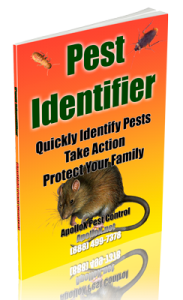Wasps, Hornets
Call Now: (888) 499-7378
Schedule an Appointment Online
If you’ve discovered a wasp, hornet or bees nest near your home and want to get rid of it before you, your family or pet gets stung, call ApolloX Pest Control.
ApolloX Pest Control will remove wasps, hornets, and bees from your home quickly, efficiently, and safely.
Baldfaced Hornet
 The baldfaced hornets are best known for their large football-shaped paper nest, which they build in the spring. The nests can reach 3 feet tall. Hornets are protective of their nests and will sting if disturbed.
The baldfaced hornets are best known for their large football-shaped paper nest, which they build in the spring. The nests can reach 3 feet tall. Hornets are protective of their nests and will sting if disturbed.
More about the baldfaced hornet…
Paper Wasps
 Paper wasps mix saliva with fibers from dead plants, to use for constructing nests. The nests look like gray paper and have open combs with cells. Paper Wasps generally only attack if the nest is threatened. They feed on nectar and other insects.
Paper wasps mix saliva with fibers from dead plants, to use for constructing nests. The nests look like gray paper and have open combs with cells. Paper Wasps generally only attack if the nest is threatened. They feed on nectar and other insects.
Yellow Jackets
 Yellow Jackets have a yellow and black head/face and patterned abdomen. They can be found any place humans can be found. Check near recycling bins or other areas where sugar is common. They become more aggressive in autumn they begin to die out.
Yellow Jackets have a yellow and black head/face and patterned abdomen. They can be found any place humans can be found. Check near recycling bins or other areas where sugar is common. They become more aggressive in autumn they begin to die out.
Cicada Killer Wasps
 Although Cicada Killer Wasps rarely sting unless disturbed, homeowners may become alarmed because of their very large size (nearly two inches). They dig annoying holes in lawns, flower beds, gardens, and sandy areas. They appear in mid to late summer.
Although Cicada Killer Wasps rarely sting unless disturbed, homeowners may become alarmed because of their very large size (nearly two inches). They dig annoying holes in lawns, flower beds, gardens, and sandy areas. They appear in mid to late summer.
More about cicada killer wasps…
Wasps, Hornets
Call Now: (888) 499-7378
Schedule an Appointment Online
How to Stop the Spread of Yellow Jacket Nests On Your Property
One of the most important preventative pest control actions you can take in the fall is to eliminate all yellow jacket nests on your property.
Why Eliminate Yellow Jacket Nests In the Fall?
Each yellow jacket nest can spawn 20 or more nests on your property next spring, each with 5000 or more ill-tempered yellow jackets! Imagine 100,000 yellow jackets in and around your home, garage, garden…
How Does One Yellow Jacket Nest Turn Into 20 or More?
By fall, the yellow jacket nest has reached peak size. The nest is filled with reproductive cells containing new males and queens. The new queens build up fat reserves to overwinter. Adult reproductives leave the parent colony to mate. After mating, males quickly die, while fertilized queens seek protected places to overwinter in covered natural locations such as tree stumps, hollow logs and under wood piles or yard debris, although they may also choose manmade structures for shelter.
In spring, the queens emerge from their winter shelters and each begin to build a nest from plant fibers that they chew, making a type of paper. Where there was just one nest last fall, now there are many, each with their own queen! Each queen begins laying eggs in her new nest.
Many Yellow Jacket Nests On Your Property, Growing In Size
Throughout the summer, the nests continue to grow. As adults, the first offspring are sterile female workers that expand the nest, search for food and care for the queen and her young. After her first generation matures, the yellow jacket queen remains inside the nest laying eggs for the rest of the summer. The new nests grow to a size of 5000 yellow jackets or more by fall and the cycle repeats.
Fall Is the Best Time to Stop the Spread of Yellow Jacket Nests On Your Property
Want to avoid 20 or more yellow jacket nests on your property next spring? The solution is to have ApolloX Pest Control find and eliminate any seed nests this fall.
Call Now: (888) 499-7378
Schedule an Appointment Online












Recent Comments